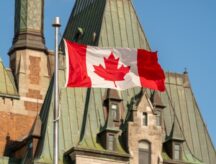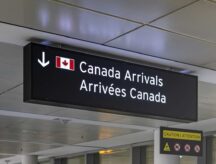Canada is supporting people and businesses during COVID-19 outbreak
Canada is taking steps to stabilize the economy, protect jobs, and help those affected by COVID-19 containment measures. Details of the COVID-19 Economic Response Plan were released on Wednesday, March 18.
Canada will be allocating up to $82 billion, more than three per cent of its GDP, to help ensure Canadians can pay rent and buy groceries, and that businesses can continue to pay their employees and their bills.
Up to $27 billion of the total funding will go to support Canadian workers and businesses. In addition, the government will provide up to $55 billion in tax deferrals, allowing businesses and households to pay their taxes at a later date, according to a government media release.
These measures follow Canada’s $1 billion COVID-19 Response Fund, which supports the health care systems of the provinces and territories.
Find out if you are eligible for any Canadian immigration programs
More than $500 billion in credit and liquidity is available to support people and ensure businesses can operate.
The six largest financial institutions in Canada are working with personal and small business banking customers to provide flexible solutions on a case-by-case basis to help manage financial challenges due to COVID-19. They are aiming to help Canadians get through childcare disruption due to school or daycare closures, and those suffering from COVID-19. This support includes payment deferral for mortgages for up to six months and the opportunity for relief on other credit products.
“These are extraordinary times and we must take extraordinary measures,” Minister of Finance, Bill Morneau, said in the release. “I am working with the financial sector, the Bank of Canada, my provincial and territorial colleagues, and my counterparts from around the world to keep coordinating on significant actions to protect the Canadian and global economy.”
Support for workers, homeowners, families
More flexibility will be allowed for lenders to defer mortgage payments for homeowners experiencing financial difficulties related to the pandemic. Insurers are already instructed to permit lenders to allow payment deferral.
The government will also provide additional assistance to families with children, adding almost $2 billion toward Canada Child Benefit payments
Workers who must stay home and do not have access to paid sick leave may be able to receive up to $900 bi-weekly for up to 15 weeks. This measure covers workers and self-employed individuals who are sick, quarantined, in self-isolation but who do not qualify for Employment Insurance (EI). It also covers those who are taking care of sick family members such as elderly parents and children.
Workers who are facing unemployment and who are not eligible for Employment Insurance (EI) may be able to receive the Emergency Support Benefit through the Canada Revenue Agency. Up to $5 billion is allocated for this measure.
Additional assistance will be given to individuals and families with low and modest incomes with a “special top-up payment” under the Good and Services Tax (GST) credit. This is expected to inject $5.5 billion into the economy.
The mandatory one-week waiting period for EI sickness benefits will be waived for at least six months, for those who are in quarantine or who have been directed to self-isolate. In addition, the requirement for a medical certificate to access EI sickness benefits will be waived.
The deadline for filing taxes has been extended from April 30 to June 1. Taxpayers can defer the payments of income tax until August 31, interest and penalty-free.
Tying into the efforts for businesses, the government will also provide eligible small businesses with a 10 per cent wage subsidy for the next 90 days up to a maximum of $1,275 per employee and $25,000 per employer. Corporations eligible for the small business deduction, not-for-profit organizations and charities will benefit from this measure. It is an effort to help Canadians keep their jobs.
Find out if you are eligible for any Canadian immigration programs
Support for vulnerable groups
The minimum withdrawals from Registered Retirement Income Funds (RRIFs) are being reduced by 25 per cent in recognition of the impact of volatile market conditions on senior’s retirement savings.
Those paying back Canada Student Loans will get an interest-free break from payment for a six-month period.
The government is also providing $305 million for a new distinctions-based Indigenous Community support fund in an effort to address the immediate needs of First Nations, Inuit, and Métis communities.
An additional $50 million will be available to women’s shelters and sexual assault centres to help with their ability to manage and prevent outbreaks in their facilities. This funding will also cover such facilities in Indigenous communities.
Canada will also provide an additional $157.5 million to address homelessness through the Reach Home program.
Support for businesses
Canada will allow businesses to defer income tax payments until August 31, interest and penalty-free.
Businesses will also be allowed access to more credit through the new Business Credit Availability Program, which is expected to provide more than $10 billion of additional support to small, medium, and large Canadian businesses. More credit will also be available to farmers and the agri-food sector through Farm Credit Canada.
The government will also support Canadian businesses when deemed to be in the national interest to deal with exceptional circumstances by providing flexibility on the Canada Account limit.
Canada will also further expand Export Development Canada’s ability to provide support to domestic businesses.
They will also launch an Insured Mortgage Purchase Program to purchase up to $50 billion of insured mortgage pools. This is intended to provide stable funding to banks and mortgage lenders, as well as support continued lending to businesses and consumers. The government will enable these measures by raising Canada Mortgage and Housing Corporation’s limits by $150 billion each.
Find out if you are eligible for any Canadian immigration programs
© 2020 CIC News All Rights Reserved
- Do you need Canadian immigration assistance? Contact the Contact Cohen Immigration Law firm by completing our form
- Send us your feedback or your non-legal assistance questions by emailing us at media@canadavisa.com







